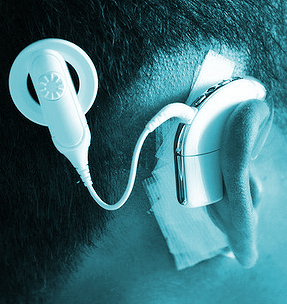Implant safety test spots leaks
 Australian scientists have developed a new safety test for bionic implants.
Australian scientists have developed a new safety test for bionic implants.
Physicists at the University of Sydney have proposed new standards to measure moisture leaks into devices such as pacemakers, cochlear hearing implants and retinal replacements.
Bionic implants must be able to operate successfully in moist environments in the human body. While the potential for large leaks into the devices are easy to detect during manufacturing, small leaks can escape detection and standard testing is required to ensure safety and prevent moisture-induced failure.
Professor David McKenzie says there are commercially-available systems that measure relative humidity, but these are not sensitive enough for the most demanding applications in implantable biomedical devices.
Using mass spectroscopy technology, the measurement of helium as a proxy for moisture leakage is a de facto industry standard test for the critical small leaks that are hard to pick up.
“In practice and in most cases, helium testing of bionic devices is a good standard, but by improving the compliance by a factor of 10, we think the industry can further guarantee the safety of biomedical implants,” Professor McKenzie said.
“Helium leak detection tests are widely used for the location of more sensitive leaks, but direct measurement of gaseous or liquid water leakage at similar sensitivities has proven too difficult until now.”
Professor McKenzie and colleagues from the Australian government’s National Measurement Institute have developed a standard leak test and shown how to use it to verify the quality of encapsulations, or the containment of medical devices.
They have published their research in the American Chemical Society’s Applied Materials & Interfaces.
Lead author Dr Wenwen Lei from the National Measurement Institute said: “For very high sensitivities, it is important we try to directly measure water leak risks rather than the de facto measure of helium, which is not as accurate”.
“Water has special abilities to penetrate through very small spaces given its different behaviour. For instance, it has been recently discovered that water acts in a really weird way in carbon nanotubes, where the water does not seem to touch the sides of tiny passageways not much wider than a millionth of a human hair.”
Professor McKenzie said: “Any such ‘nanoleakage’ would be really serious if it happened in medical devices, especially those with lots of feedthrough apertures, such as the bionic eye.”
The new standard moisture leak breaks new ground by studying water behaviour in a stable polymer material. Using the new tests, researchers directly compared water leakage to helium leakage in biomedical test structures. They found that in the majority of cases, calibrated measurements of moisture leak rates do exceed helium leak rates, especially for very small and large leaks.
Given their findings that water can leak up to 10 times the rate of helium leaks, they propose strengthening the compliance standard for helium testing of biomedical devices tenfold, or one order of magnitude.
“As we improve bionic technology, wearable implants will become more common, so it’s important to give people that extra level of safety assurance,” Professor McKenzie said.








 Print
Print